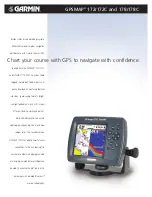
System 10
Installation and Operation
7
For future reference, please record your system information here (the serial number
appear on each transmitter, and on the bottom of each receiver):
Receiver
Model ATW-R1100
Serial Number
Transmitter
Model ATW-T100
Serial Number
1 or 2
System Frequencies
Note:
While unique System ID numbers are not required, we
recommend assigning unique System ID numbers for each transmitter-
receiver pair. As noted previously, System ID numbers are not related to
transmitter frequency; they are provided for user convenience only.
*If transmitter pair button is not pushed within 30 seconds, the system
will revert to its previous settings.
Ten Tips to Obtain the Best Results
1. Use only fresh alkaline or fully charged rechargeable batteries.
2. Position the receiver so that it has the fewest possible obstructions
between it and the normal location of the transmitter. Line-of-sight
is best.
3. The transmitter and the receiver should be as close together as con
veniently possible, but not less than 6' (2 m).
4. While System 10 has been designed to stack for convenient
multiple-system operation, please keep other wireless devices
(including wireless systems and routers) away from System 10
receivers. For best performance, some routers and Wi-Fi-based
wireless systems may need to be up to 30 feet away from
System 10 receivers.
5. The receiver antennas should be kept away from any metal.
6. As some guitar pickups may be overly sensitive to magnetic
interference, please keep the System 10 UniPak
®
body-pack
transmitter at least 1 foot away from guitar pickups.
7. Use the transmitter level control to optimize performance for your
instrument, voice, or other sound source.
8. If the receiver output is set too low, the overall signal-to-noise ratio
of the system may be reduced. Conversely, if the volume control
of the receiver is set too high, it may over-drive the input of the
mixer/amplifier, causing distortion. Adjust the output level of the
receiver so the highest sound pressure level going into the
microphone (or the loudest instrument playing level) causes no
input overload in the mixer, and yet permits the mixer level
controls to operate in their “normal” range (not set too high or
too low). This provides the optimum signal-to-noise for the
entire system.
9. Turn the transmitter off when not in use. Remove the battery if
the transmitter is not to be used for a period of time.
10. Unplug the receiver from the AC outlet when the system is not
in use.
System Operating Frequencies
Automatic Frequency Selection
System 10 wireless systems operate in automatically selected frequen-
cies in the 2.4 GHz range, far from TV and DTV interference. Up to eight
channels may be used together without any frequency coordination
problems or group selection issues. Every time a receiver/transmitter
pair is powered on, it automatically selects clear frequencies. Due to
the dynamic nature of System 10 automatic frequency selection, these
transmitting frequencies may change during power-up or performance if
interference is encountered. These frequency changes occur at both the
receiver and transmitter; they are seamless and imperceptible to the ear.


























